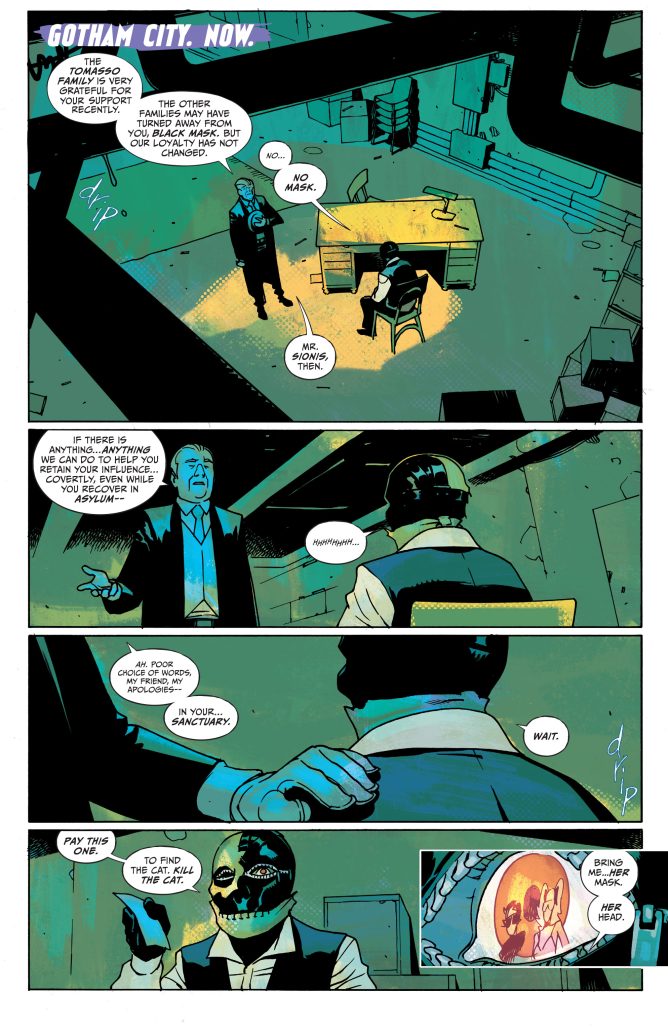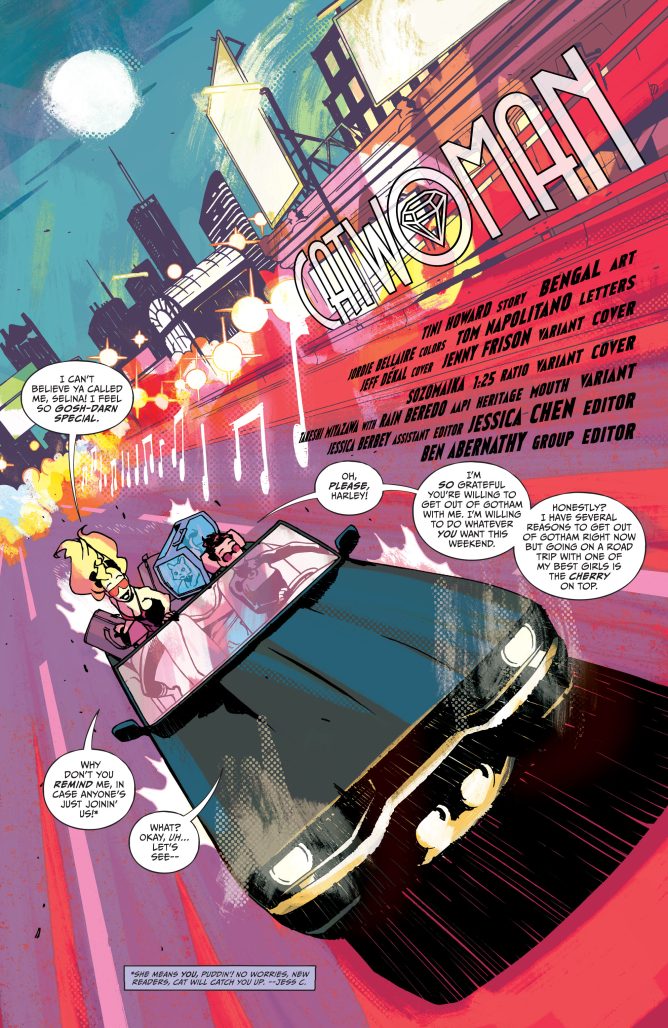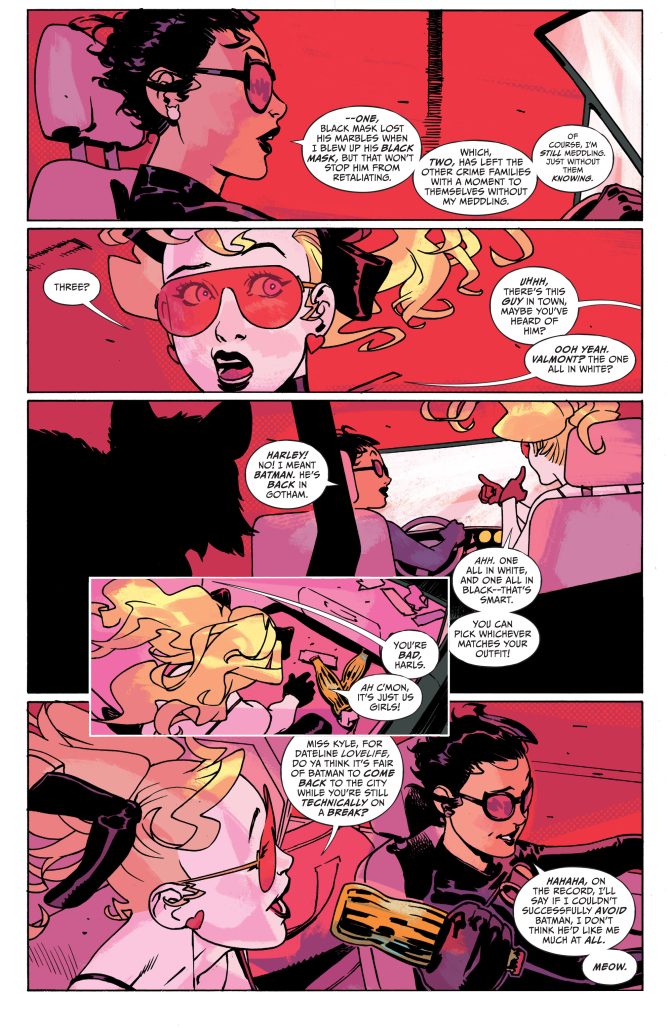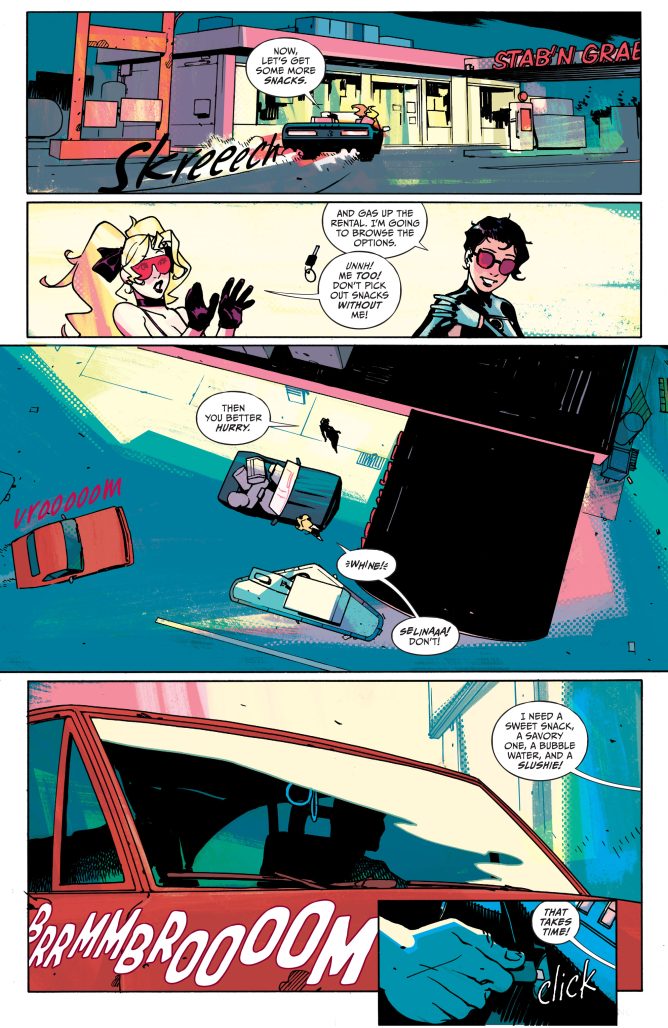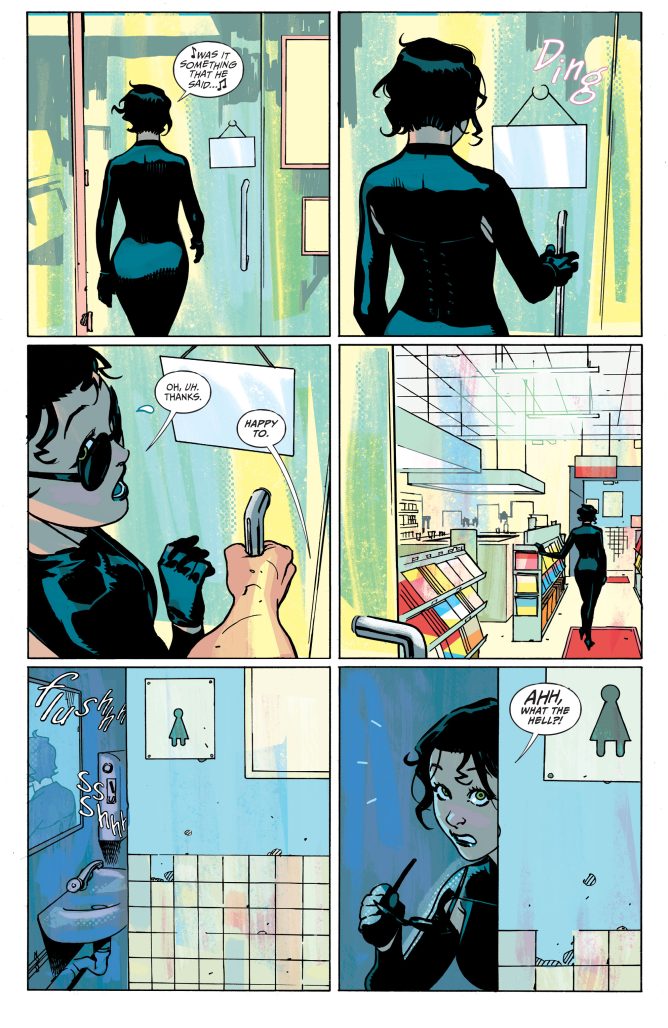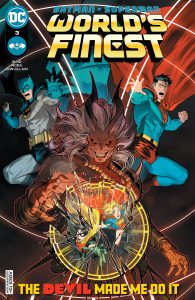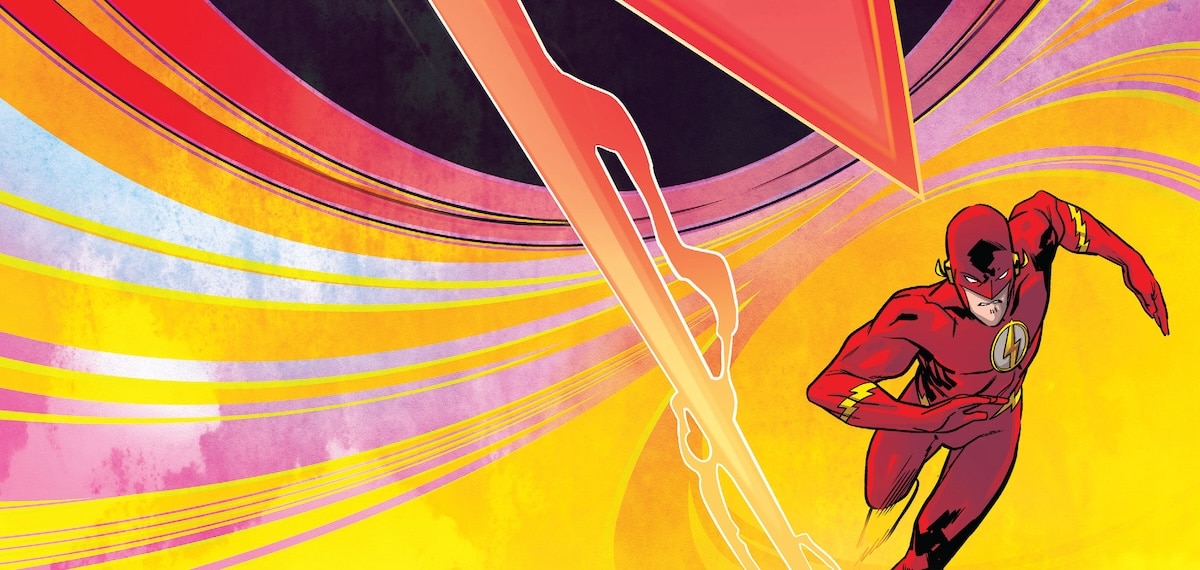THIS WEEK: Catwoman #43 proves why allowing a queer creator to move from using subtext to using text is important.
Note: the review below contains spoilers. If you want a quick, spoiler-free buy/pass recommendation on the comics in question, check out the bottom of the article for our final verdicts.
 Catwoman #43
Catwoman #43
Writer: Tini Howard
Artist: Bengal
Colors: Jordie Bellaire
Letterer: Tom Napolitano
Cover: Jeff Dékal
Here’s the thing, I know that Selina Kyle officially came out as bisexual in 2015, during the time period in which I wasn’t reading DC Comics, because I didn’t care for the New 52. I know it made a big commotion on social media, both from people excited about the decision to make decades of subtext into text, and from the people angry that “it came out of nowhere” and “ruined their childhoods.” Because that’s what happens every single time an existing character gets revealed to be queer. If the character has existed for even five years, there’s a certain contingent of fandom that screams bloody murder and that if creators want queer characters so bad they should just create new ones. I use five years as my tent-pole here because it happened with Jon Kent, a character who was introduced in 2015 but didn’t actually have any sort of personality until 2016. And if a queer creator does introduce a brand new queer character? Well then that same group of fans calls it pandering and that they should get their political agenda out of comic books, willfully misunderstanding that comics have always been and always will be political.
So it was no surprise to me when less than a year later, DC quietly ignored that Catwoman #39 ever happened. With Rebirth came a 50-issue focus on the Batman/Catwoman relationship, and her sexuality was nary a mention. When she was finally allowed a solo series again, after the break-up, the focus was on other aspects of self-discovery. DC Pride 2021 came and went without a mention of the character who was probably DC’s biggest named queer character. There were lots of reasons to celebrate that issue, and indeed, I did celebrate it. But there were fans who wondered why Catwoman was not included in the celebration. It felt like yet another case of bi-erasure. That since Catwoman had just been in a long-term, straight-passing relationship, there’s no need to ever talk about her being queer ever again. But our sexualities don’t just magically change just because we date one way or the other. Nor even if we show a preference for one or the other.
When Tini Howard took over the book in Catwoman #39, there was an immediate and sudden shift. A bisexual woman was writing a bisexual character who had mostly had that aspect of her character ignored for five years, and immediately let loose with making the book as unabashedly queer as she possibly could. Selina taking the time to inner monologue about how she has a type and it’s a type that both Onyx and Batman fit? Absolutely perfect.
This shift also is a good illustration of the drastic cultural divide that exists between the Marie Javins headed era of DC Comics and the C.B. Cebulski headed marvelous competition. Since Javins has taken over as Editor-in-Chief, there’s been a lot more efforts at inclusion at DC Comics than there had been during the previous leadership, and queer representation is just one of the places where that’s extremely evident. In the past year, we’ve gotten the first-ever Pride special, we got Crush & Lobo and Aquaman: The Becoming. Both Tim Drake and Jon Kent came out. Superman’s team in Action Comics features multiple queer relationships and characters. A queer Black woman is Queen of Themyscira. That same series textualized the fact that trans women are unequivocally included when the Amazons say “all women.”
The reason that I brought up Marvel is that for the past three years Howard has been working on the X-Men line with Excalibur, X of Swords, and Knights of X, and during that time has had to work completely within subtext as she developed the Betsy Braddock and Rachel Summers relationship. The subtext was extremely loud, but it was still subtext, and that’s all it has been allowed to be. Compare that 24-issue run of Excalibur to the five issues of Catwoman that Howard has written, and the difference is stark, and it becomes very clear that if Howard is given the room to write queer characters as textually queer, she does it extremely well.
Catwoman #43 is another great example of that. What is mostly a fun, breather issue after Howard’s first very intense arc does a lot of work on the personal character development we’ve seen Selina working towards in Howard’s run. Presented as a girl’s road trip (mostly to get out of Gotham while Black Mask is still very heated), guest artist Bengal has a lot of fun making this issue as wacky and antic filled as possible, a tonal shift from the previous arc that gives readers a chance to breathe.
The Harley and Selina relationship shown in Catwoman #43 is very sweet and wholesome, while still being a lot of zany fun, and Bengal’s lighter style was a perfect showcase for it. I especially loved the scene where the two of them cuddled up to go to sleep, with an internal monologue that while it reinforced that yes, both of these characters are bi, at the moment this was not a line Selina wants to step over. It was very cute and sweet, while still allowed to be as textually queer as possible (as was Selina being happy about the prospect of watching “tough gals in short shorts who can take a hit”).
Queer fans have had to live on subtext for so long, that when a comic is allowed to have a character be openly and textually queer, it feels like a breath of clean air after having had our heads underwater for five minutes. Imagine we get to a world where the slivers of representation don’t have to do all that work to make us feel that way, where we don’t have to dig and squint to find it. Howard’s work on Catwoman is pushing us closer to a world where that doesn’t need to be the case, and I’m very thankful for it.
Verdict: BUY
Round-Up
- Batman/Superman: World’s Finest #3 is still a perfect encapsulation of these characters, unanchored from any one specific continuity. I hope this series goes on for the longest time, and that Mora gets to keep bringing in other DC heroes so we can all benefit from seeing his takes on everyone.
- Nightwing #92 has a great flashback sequence drawn by Bruno Redondo and colored by Adriano Lucas that looks like it was pulled directly from one of the recent Caped Crusader or Dark Knight Detective volumes that cover the early Post-Crisis career of Batman. Lucas’s colors in particular are very reminiscent of long-time Batman colorist Adrienne Roy.
- Fables #151 came out. It didn’t really need to, as #150 did its job extremely well in closing out that series. This issue in particular doesn’t work well because it’s presented as just another monthly issue of the series that ended seven years ago. No recap, no editor’s notes, just dropping you right back in, as though it’s only been a month for readers.
Miss any of our earlier reviews? Check out our full archive!


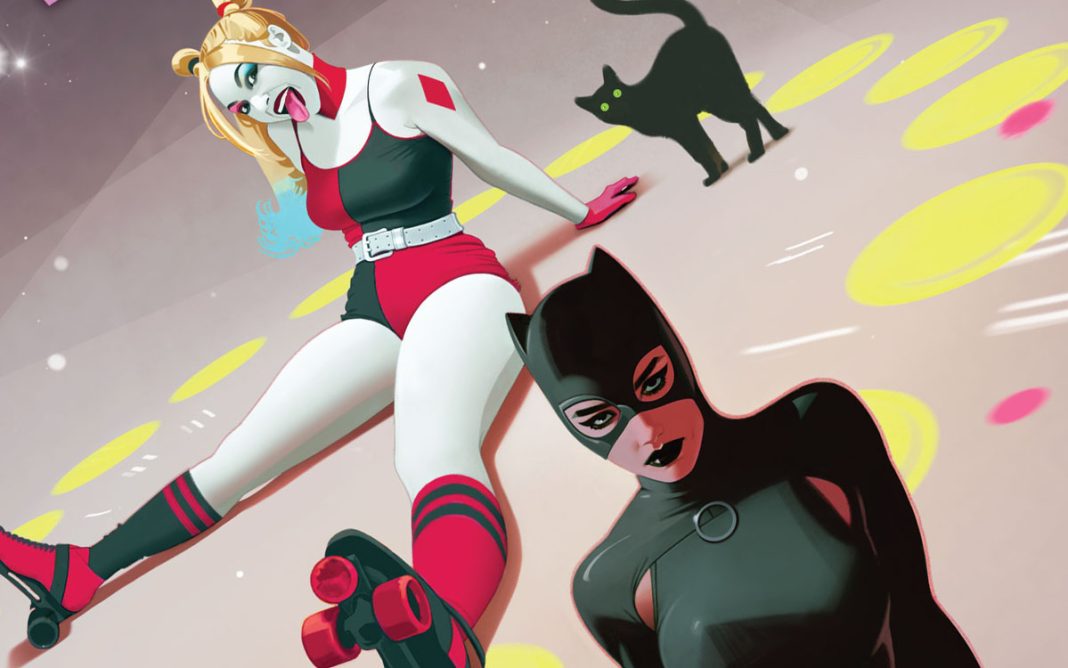
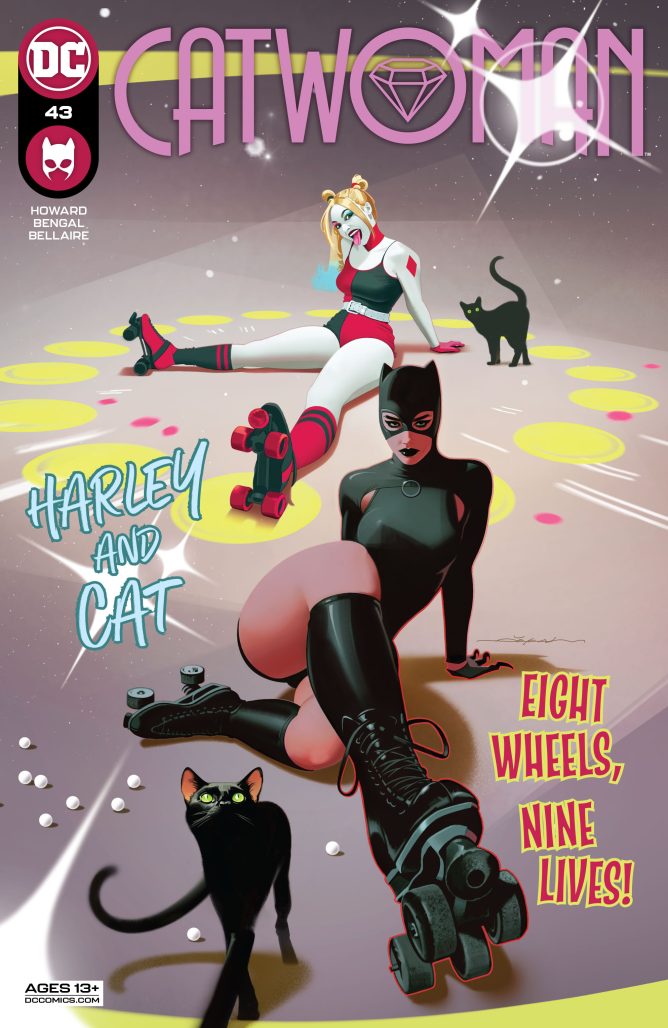 Catwoman #43
Catwoman #43